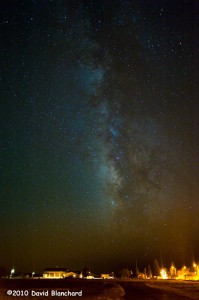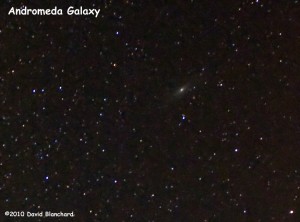Did you get a chance to view the Perseid meteor shower this year? It peaked on the evening of August 12-13 but meteors were visible for many days preceding the peak. With the moon just a few days past new and setting early the skies were very dark for optimal viewing. A maximum rate of more than 100 meteors per hour has been reported with this years event. This compares with a more typical maximum rate of about 50-80 per hour. So this was a better than average event with higher numbers as well as very dark skies.

But to make things even better there was a three-way planetary conjunction taking place at the same time. In the western sky after sunset an observer could see the planets Venus, Mars, and Saturn close together along with the crescent moon.
For the meteors, I used a 28mm wide angle lens, ISO 3200, f/4.0, and 30s exposures. I set the camera to continuous shooting mode and let it run until the card filled a few hours later. I then reclined on a lounge chair with a sleeping bag draped over me.



Even though I saw a large number of meteors with my eyes — and some of them were spectacular long-path events with residual debris trails — the camera captured far fewer because the field of view of even a wide angle is not wide enough to view the entire sky


